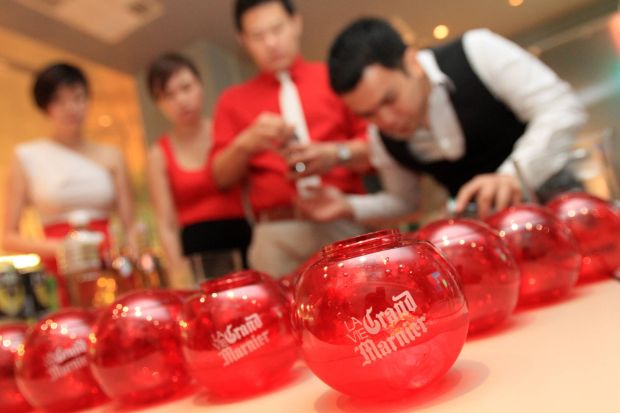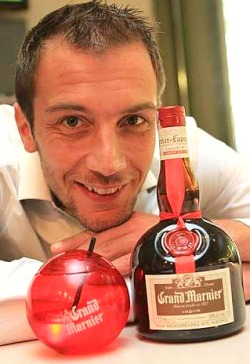Our columnist finds the answer to a nagging question that has haunted him.
WHAT is triple sec? I see that name in cocktail recipes all the time – one part this, two parts of that, and a part of triple sec – and have always wondered what exactly this fascinatingly-named ingredient was.
Why is it called “triple sec” when it is actually just orange-flavoured liqueur? Why not just call it “orange liqueur” instead? Why “triple sec”?
First of all, “triple sec” is actually a French term meaning “triple-distilled”, and it is the name originally given to orange-flavoured liqueurs that are made from the dried peel of oranges which are grown on the South American island country of Curaçao. These days, however, the term is used to describe almost any orange-flavoured liqueur.
The origin of the spirit is rather hazy, but the most likely inventor of triple sec is Jean-Baptiste Combier, who made the first triple sec in Saumur, France, in 1834.
Triple sec is most commonly used as a sweetening agent in cocktails such as the margarita, Cosmopolitan, Long Island and Mai Tai, or to add orange flavour to a drink. There are quite a number of brands, including the more common ones such as Bols and Dekuyper, and the higher-end Cointreau and Grand Marnier.
While most triple secs tend to be just plain alcohol flavoured with orange peel, French brand Grand Marnier takes it one step further and uses cognac as a base for their liqueur. With its cognac pot-still shaped bottle, an elegant wax seal, red ribbon and ivory label, Grand Marnier is one of the most recognisable and popular liqueurs in the world.
Created in 1880 by Alexandre Marnier-Lapostolle, Grand Marnier is flavoured with the peel of fresh orange from South America.
“We produce our own cognacs and five-year-old cognacs for Grand Marnier,” said mixologist Julien Defrance, who is Grand Marnier’s brand ambassador. “We use a very specific kind of orange – the tropical Citrus bigaradia orange – that is grown in our own plantations in South America.”
Defrance stressed that Grand Marnier’s goal is to achieve the perfect blend of cognac flavour and orange smell. “We don’t want just a strong taste of orange, but also want to bring out the flavour of the cognac,” he said.
Sure enough, taken neat, Grand Marnier is as smooth as any cognac I’ve ever tasted, with a sweet, orange aroma and a wonderfully smooth and silky orange finish. It was not as sweet as some of the other triple secs I’ve tried (most of which I will probably never ever attempt to drink neat again).
According to Defrance, Grand Marnier is probably the most typically French liqueur, as you can find a bottle in almost every household in France. With about 40% alcohol base volume, it is typically drunk neat as a digestif in France, although you can also mix one part Grand Marnier and two parts tonic water or ginger ale to make a great long drink or apéritif. Taken this way, the sourish flavour of the mixers is balanced out beautifully by the sweetness of the Grand Marnier.
Besides drinking, Grand Marnier is also used in the popular French dessert Crêpes Suzette – it is poured on top of the thin pancakes and flambéed.
Grand Marnier, or triple sec in general, is commonly used as an ingredient in many classic cocktails. In fact, Defrance claims that the original recipes for the Cosmopolitan and Margarita called for a Grand Marnier, not any other triple sec. One popular cocktail that uses specifically Grand Marnier is the B-52 shooter. Named after the B-52 Stratofortress long-range bomber plane, it is a shooter cocktail that layers coffee liqueur, a cream liqueur (usually Bailey’s) and Grand Marnier in a shot glass, and is downed in a single shot.
According to Defrance, most triple sec brands use just white spirit to make their product and artificial flavourings as well. “If you make a margarita with a cheaper triple sec, you will be able to taste the alcohol in your cocktail. You also have to put a lot more of it into the drink to get the flavour you want,” he said. “Grand Marnier has such a strong aroma and flavour of fresh oranges that you can use a lot less of it in your cocktail compared to the cheaper brands.”
So why do so many cocktails call for triple sec in them? Why go for the orange flavour instead of something less common like, say, apple, lychee or some other fruit?
“Orange is a very popular flavour; everyone seems to love oranges! It is also a very familiar flavour, and easy for people to recognise and enjoy,” said Defrance, who added that triple sec is very different from other orange-based ingredients such as orange juice, syrup or zest.
“Orange juice will make the drink fresher; orange syrup makes it sweeter and smoother, while orange zest is usually used to give a stronger orange aroma to the drink. However, adding orange liqueur will give you an orange flavour without the over-sweetness of syrup, and adds alcohol and luxury unlike fresh orange juice,” he said.
Michael Cheang’s tongue turned orange after he mixed orange juice with orange liqueur, orange syrup and orange zest.

